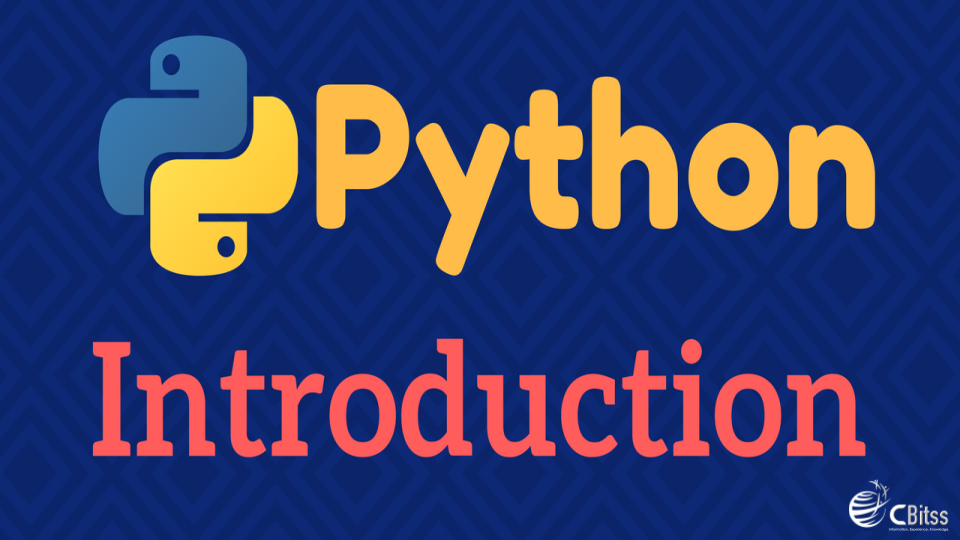FROM AROUND THE WORLD
Employee Grievance
Best colleges in Chandigarh
First day in “the city beautiful” Chandigarh
Unix Vs. Linux: What’s the Difference?
Youtube Auditions
Uses Of CSS Fragmentation in web designing
Food Courts in Chandigarh
Python Introduction – Python is an interpreted, object-oriented, high-level programming terminology with dynamic semantics. Its high-up built in data drawing, linked with dynamic typing and dynamic required, make it very attractive for Rapid Application Development, as well as for use as a scripting or glue language to connect current components together. Python’s simple, easy to […]
Python Introduction – Python is an interpreted, object-oriented, high-level programming terminology with dynamic semantics. Its high-up built in data drawing, linked with dynamic typing and dynamic required, make it very attractive for Rapid Application Development, as well as for use as a scripting or glue language to connect current components together. Python’s simple, easy to […]
Python Introduction
June 3, 2025 / By authorPost by relatedRelated post
-
June 3, 2025
Best colleges in Chandigarh
-
June 3, 2025
First day in “the city beautiful” Chandigarh
-
June 3, 2025
Food Courts in Chandigarh
-
June 3, 2025
Top IT companies in Chandigarh
User Rating
Python Introduction – Python is an interpreted, object-oriented, high-level programming terminology with dynamic semantics. Its high-up built in data drawing, linked with dynamic typing and dynamic required, make it very attractive for Rapid Application Development, as well as for use as a scripting or glue language to connect current components together. Python’s simple, easy to learn syntax highlight readability and therefore reduces the cost of program maintenance. Python backing modules and packages, which encourages program assistance and code reuse. The Python interpreter and the large standard library are available in source or binary form without complaint for all major platforms, and can be freely assigned.

Why use Python?
There are a few sense why Python could be a good choice for your next programming project, whether it’s your first try at coding or if you’re a seasoned developer looking for a new bound.
Perhaps most mostly, Python has an enormous user community. This means that no matter what issue you’re trying to solve, chances are there is already strong documentation, tutorials, guides, and examples to help you along your idea.
7 Reasons Why You Must study Writing Software Applications in Python
1) Readable and Maintainable Code
While writing a software application, you must focus on the element of its source code to simplify care and updates. The syntax rules of Python allow you to express concepts without writing new code.
2) Multiple Programming Paradigms
Like other stylish programming languages, Python also supports several programming paradigm. It backing object oriented and structured programming fully. Also, its language features support various concepts in useful and aspect-oriented programming.
3) Compatible with Major Platforms and Systems
At present, Python is backing many operating systems. You can even use Python interpreters to run the code on specific floor and tools. Also, Python is an interpreted programming sound.
4) Robust Standard Library
Its large and robust standard library generate Python score over other programming languages. The classic library allows you to choose from a wide range of modules according to your actual needs. Each module further enables you to add functionality to the Python application without writing added code.
5) Many Open Source Frameworks and Tools
As an open authority programming language, Python helps you to curtail software development cost naturally. You can even use several open authority Python frameworks, study and development tools to decrease development time without increasing development cost.GUI application development accepting Python GUI frameworks and toolkits related PyQT, PyJs, PyGUI, Kivy, PyGTK and WxPython.
6) Simplify Complex Software Development
Python is a familiar purpose programming language. Hence, you can use the programming language for developing the pair desktop and web applications. Also, you can use Python for developing complicated scientific and numeric applications. Python is designed with features to promote data analysis and visualization.
7) Adopt Test Driven Development
You can use Python to create prototype of the software application immediately. Also, you can build the software application straight from the prototype simply by refactoring the Python code. Python even makes it effortless for you to perform coding and testing together by adopting test driven development (TDD) approach.
How Python makes programming simple
Python’s syntax is meant to be comprehensible and clean, with little pretense. A standard “hello world” in Python 3.x is nobody more than:
print(“Hello world!”)
Python provides many grammatical elements to concisely express many common program flows. Consider a case program for reading lines from a text file into a list object, stripping each line of its cancel newline character along the way:
with open(‘myfile.txt’) as my_file:
file_lines = [x.strip(‘\n’) for x in my_file]
The with/as construction is a context administrator, which provides an efficient way to instantiate an object for a block of code and then adapt of it outside that block. In this case, the article is my_file,, instantiated with the open() function. This takes the place of several lines of ordinary to open the file, read individual lines from it, then close it up.
The [x … for x in my_file] development is another Python idiosyncrasy, the list comprehension. It lets an item that involve other items (here, my_file and the lines it contains) be repeat through, and it lets each iterated element (that is, each x) be processed and automatically attach to a list.
For More Information About Python Join CBitss technologies. CBitss Provides best Python Training in chandigarh Sector 34A.
Categories
List Articles
5 Best places to visit in the city beautiful, Chandigarh
Best Places to visit in Chandigarh Chandigarh is a beautiful and modern city, known for its clean surroundings and planned structure. It is home to many amazing tourist spots.It was the first planned city of India and is often called the dream city of Pandit Jawaharlal Nehru, the country’s first Prime Minister.Chandigarh is surrounded…
Read more-
June 3, 2025 / By editor Employee Grievance
-
June 3, 2025 / By editor Best colleges in Chandigarh
-
June 3, 2025 / By ADmin@CHD First day in “the city beautiful” Chandigarh
-
June 3, 2025 / By author Unix Vs. Linux: What’s the Difference?
-
June 3, 2025 / By ADmin@CHD Youtube Auditions
Our Computer Courses
- Web Designing Course in Chandigarh
- Linux Training in Chandigarh
- Php Training in Chandigarh
- PPC Training in Chandigarh
- SEO Training in Chandigarh
- Android Training in Chandigarh
- Python Training in Chandigarh
- CCNA Training in Chandigarh
- Short term computer courses in Chandigarh
- Cloud computing training in Chandigarh






